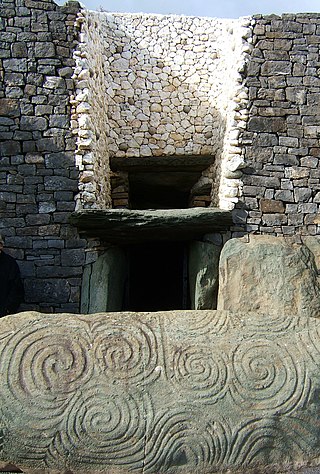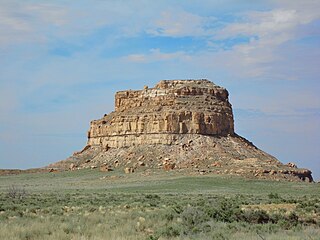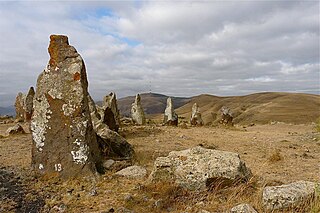Related Research Articles

Archaeoastronomy is the interdisciplinary or multidisciplinary study of how people in the past "have understood the phenomena in the sky, how they used these phenomena and what role the sky played in their cultures". Clive Ruggles argues it is misleading to consider archaeoastronomy to be the study of ancient astronomy, as modern astronomy is a scientific discipline, while archaeoastronomy considers symbolically rich cultural interpretations of phenomena in the sky by other cultures. It is often twinned with ethnoastronomy, the anthropological study of skywatching in contemporary societies. Archaeoastronomy is also closely associated with historical astronomy, the use of historical records of heavenly events to answer astronomical problems and the history of astronomy, which uses written records to evaluate past astronomical practice.

Subhash Kak is an Indian-American computer scientist and historical revisionist. He is the Regents Professor of Computer Science Department at Oklahoma State University–Stillwater, an honorary visiting professor of engineering at Jawaharlal Nehru University, and a member of the Indian Prime Minister's Science, Technology and Innovation Advisory Council (PM-STIAC).

Alexander Thom was a Scottish engineer most famous for his theory of the Megalithic yard, categorisation of stone circles and his studies of Stonehenge and other archaeological sites.

Fajada Butte is a butte in Chaco Culture National Historical Park, in northwest New Mexico.
The megalithic yard is a hypothetical ancient unit of length equal to about 2.72 feet (0.83 m). Some researchers believe it was used in the construction of megalithic structures. The proposal was made by Alexander Thom as a result of his surveys of 600 megalithic sites in England, Scotland, Wales and Brittany. Thom also proposed the megalithic rod of 2.5 megalithic yards, or on average across sites 6.77625 feet. As subunits of these, he further proposed the megalithic inch of 2.073 centimetres (0.816 in), one hundred of which are included in a megalithic rod, and forty of which composed a megalithic yard. Thom applied the statistical lumped variance test of J.R. Broadbent on this quantum and found the results significant, while others have challenged his statistical analysis and suggested that Thom's evidence can be explained in other ways, for instance that the supposed megalithic yard is in fact the average length of a pace.

Edwin Charles Krupp is an American astronomer, researcher, author, and popularizer of science. He is an internationally recognized expert in the field of archaeoastronomy, the study of how ancient cultures viewed the sky and how those views affected their cultures. He has taught at the college level, as a planetarium lecturer, and in various documentary films. He has been the director of the Griffith Observatory in Los Angeles since first taking over the position in 1974 after the departure of the previous director, William J. Kaufmann III. His writings include science papers and journal articles, astronomy magazine articles, books on astronomy and archaeoastronomy for adults, and books explaining sky phenomena and astronomy to children.

A recumbent stone circle is a type of stone circle that incorporates a large monolith, known as a recumbent, lying on its side. They are found in only two regions: in Aberdeenshire in the north-east of Scotland and in the far south-west of Ireland in the counties of Cork and Kerry. In Ireland, the circles are now more commonly called Cork–Kerry or axial stone circles. They are believed by some archaeologists such as Aubrey Burl to be associated with rituals in which moonlight played a central role, as they are aligned with the arc of the southern moon. Recent excavations at Tomnaverie stone circle have suggested that no alignment of the circle was intended.

Rujm el-Hiri is an ancient megalithic monument consisting of concentric circles of stone with a tumulus at center. It is located in the Israeli-occupied portion of the Golan Heights, some 16 kilometres (9.9 mi) east of the coast of the Sea of Galilee, in the middle of a large plateau covered with hundreds of dolmens.

Mesoamerican architecture is the set of architectural traditions produced by pre-Columbian cultures and civilizations of Mesoamerica, traditions which are best known in the form of public, ceremonial and urban monumental buildings and structures. The distinctive features of Mesoamerican architecture encompass a number of different regional and historical styles, which however are significantly interrelated. These styles developed throughout the different phases of Mesoamerican history as a result of the intensive cultural exchange between the different cultures of the Mesoamerican culture area through thousands of years. Mesoamerican architecture is mostly noted for its pyramids, which are the largest such structures outside of Ancient Egypt.

Carahunge, also known as Zorats Karer, Dik-Dik Karer, Tsits Karer and Karenish, is a prehistoric archaeological site near the town of Sisian in the Syunik Province of Armenia. It is also often referred to in international tourist lore as the "Armenian Stonehenge".
Paris Misakovich Herouni was a Soviet and Armenian physicist and engineer. He was a member of the Armenian National Academy of Sciences in the fields of radio-physics, radio-engineering, and radio-astronomy and the head of the Antenna Systems chair, which he founded, at the National Polytechnic University of Armenia and Radio Physics Research Institute (RRI). In 1986, he was awarded the USSR State Prize.
Cultural astronomy, sometimes called the study of Astronomy in Culture, has been described as investigating "the diversity of ways in which cultures, both ancient and modern, perceive celestial objects and integrate them into their view of the world." As such, it encompassed the interdisciplinary fields studying the astronomies of current or ancient societies and cultures. It developed from the two interdisciplinary fields of archaeoastronomy, the study of the use of astronomy and its role in ancient cultures and civilizations, and ethnoastronomy, "a closely allied research field which merges astronomy, textual scholarship, ethnology, and the interpretation of ancient iconography for the purpose of reconstructing lifeways, astronomical techniques, and rituals." It is also related to historical astronomy, history of astronomy and history of astrology.
Anthony Francis Aveni is an American academic anthropologist, astronomer, and author, noted in particular for his extensive publications and contributions to the field of archaeoastronomy. With an academic career spanning over four decades, Aveni is recognized for his influence on the development of archaeoastronomy as a discipline in the latter 20th century. He has specialized in the study of ancient astronomical practices in the Americas, and is one of the founders of research into the historical astronomy of pre-Columbian Mesoamerican cultures. He held an endowed chair as the Russell Colgate Distinguished University Professor of Astronomy and Anthropology and Native American Studies at Colgate University, in Hamilton, New York, where he is now an emeritus professor.

El Caracol, the Observatory, is a unique structure at pre-Columbian Maya civilization site of Chichen Itza. El Caracol, which means 'snail' in Spanish, is so named due to the spiral staircase inside the tower.
Euan Wallace MacKie was a British archaeologist and anthropologist. He was a prominent figure in the field of Archaeoastronomy.

Wurdi Youang is the name attributed to an Aboriginal stone arrangement located off the Little River – Ripley Road at Mount Rothwell, near Little River, Victoria in Australia. The site was acquired by the Indigenous Land Corporation on 14 January 2000 and transferred to the Wathaurong Aboriginal Co-operative on 17 August 2006.
William Francis Romain is an American archaeologist, archaeoastronomer, and author. William Romain received his Ph.D. in archaeology from the University of Leicester and M.A. and B.A. degrees in anthropology from Kent State University. He specializes in the study of ancient religions, cognitive archaeology, and archaeoastronomy. He is a Research Associate with the Indiana University, Museum of Archaeology and Anthropology, and serves on the editorial board of the Midcontinental Journal of Archaeology. He is a Fellow of the Royal Geographical Society and The Explorers Club. Romain is a past advisor to the Board of Trustees for the Heartland Earthworks Conservancy, past Research Associate with the Newark Earthworks Center at Ohio State University and recipient of the Archaeological Society of Ohio's Robert Converse award for Outstanding Contributions to Ohio Archaeology. William Romain is a licensed private pilot and holds certification in marine celestial navigation. He has conducted archaeoastronomic fieldwork in the Eastern United States, China, Inner Mongolia, Tibet, Thailand, Cambodia, and Myanmar (Burma). In 2011 Romain led a team of archaeologists in an investigation of Serpent Mound, in Adams County, Ohio. This was the first major investigation of the effigy in more than one hundred years and included Geoprobe coring, hand coring, limited excavation, ground-penetrating radar, and electric resistivity analysis. Among the results were new radiocarbon dates for the effigy suggesting it was built about 2,300 years ago by people of the Early Woodland period. Other work has included archaeoastronomic findings for Poverty Point and Watson Brake in Louisiana, Mound City in Ohio, the Newark Earthworks and Great Hopewell Road in Ohio, and Cahokia in Illinois. Most recently William Romain has published new archaeoastronomic findings for Angkor Wat in Cambodia, the Great Ziggurat of Ur in Iraq, Xanadu in Inner Mongolia, and the Jokhang, Samye, and Tradruk temples in Tibet.

An axial stone circle is a megalithic ring of stones of a particular design found in County Cork and County Kerry in southwest Ireland. Archaeologists have found it convenient to consider the axial five-stone circle and axial multiple-stone circle separately. The circle has an approximate axis of symmetry aligned in a generally northeast–southwest direction. The stone at the southwest side of the circle, rather than being an upright orthostat like all the rest, is a slab lying horizontally with its long thin edge along the circumference of the ring. Because it marks the axis of the circle it is called the axial stone.
Indigenous astronomy is the name given to the use and study of astronomical subjects and their movements by indigenous groups. This field encompasses culture, traditional knowledge, and astronomy. Astronomy has been practised by indigenous groups to create astronomical calendars which inform on weather, navigation, migration, agriculture, and ecology. Alongside calendric uses, constellations have names and stories that inform ceremony and social structures holding specific and deep cultural meanings for respective indigenous groups.
References
Notes
- ↑ Date information sourced from Library of Congress Authorities data, via corresponding WorldCat Identities linked authority file (LAF) .
- ↑ "Presidents". The Prehistoric Society.
- ↑ "C41/ICHA – a brief history".
- ↑ "Astronomy and World Heritage". Archived from the original on 25 July 2011. Retrieved 5 March 2010.
- ↑ "ISAAC". Archived from the original on 4 April 2010. Retrieved 5 March 2010.
Bibliography
- Adler Planetarium (11 March 2002). "Adler Planetarium & Astronomy Museum Offers In-Depth Archaeoastronomy with Dr. Clive Ruggles and Bringing the Heavens to Earth Exhibit" (PDF). Press Room Archive. Adler Planetarium. Archived from the original (Press release) on 31 December 2003. Retrieved 27 March 2009.
- Aveni, Anthony F. (1994). "Archaeoastronomy". In Samuel L. Macey (ed.). Encyclopedia of Time. Garland reference library of social science, vol. 810. New York: Garland Publishing. pp. 26–35. ISBN 0-8153-0615-6. OCLC 29428245.
- Aveni, Anthony F. (2001). Skywatchers (Rev. and updated edn. of: Skywatchers of Ancient Mexico, 1980 ed.). Austin: University of Texas Press. ISBN 0-292-70504-2. OCLC 45195586.
- Boutsikas, Efrosyni; McCluskey, Stephen C.; Steele, John, eds. (2021). Advancing Cultural Astronomy: Studies In Honour of Clive Ruggles. Historical & Cultural Astronomy. Cham, Switzerland: Springer. Bibcode:2021acas.book.....B. doi:10.1007/978-3-030-64606-6. ISBN 978-3-030-64606-6. S2CID 242439752.
- Center for Archaeoastronomy (n.d.). "About the Officers". About the Center for Archaeoastronomy. Center for Archaeoastronomy. Retrieved 27 March 2009.
- Kelley, David H.; Eugene F. Milone (2005). Exploring Ancient Skies: An Encyclopedic Survey of Archaeoastronomy. New York: Springer. ISBN 0-387-95310-8. OCLC 46937593.
- Ruggles, Clive L.N. (1994). "British archaeoastronomy". In Samuel L. Macey (ed.). Encyclopedia of Time. Garland reference library of social science, vol. 810. New York: Garland Publishing. pp. 68–70. ISBN 0-8153-0615-6. OCLC 29428245.
- University of Leicester Press and Publications Office (1 March 2007). "The Thirteen Towers: Peruvian Citadel is Site of Earliest Ancient Solar Observatory in the Americas" (Press release). eBulletin. University of Leicester . Retrieved 27 March 2009.